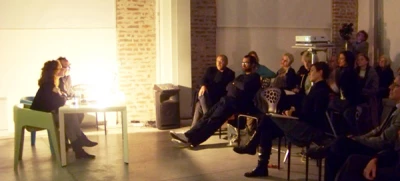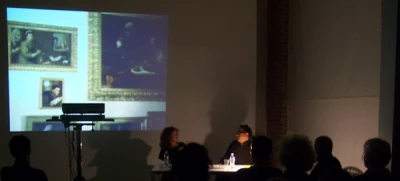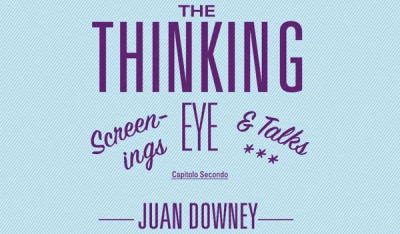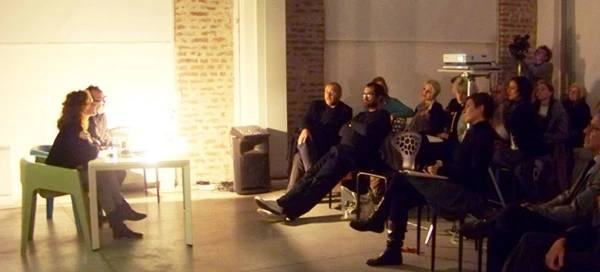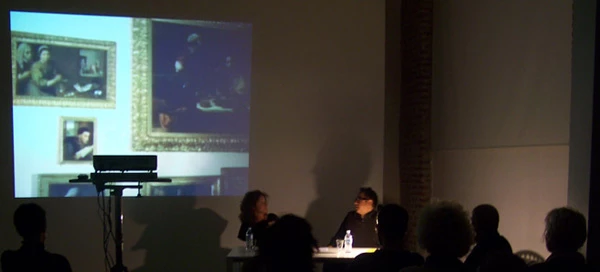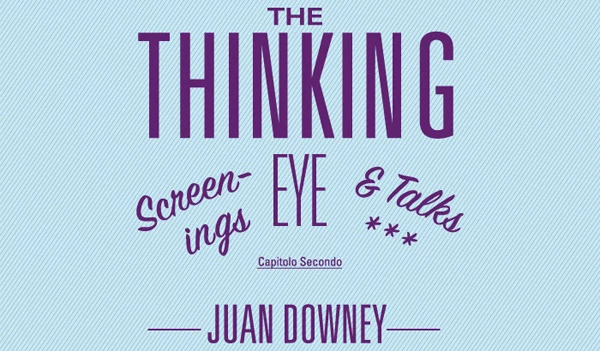The thinking eye #02
From 22.11 to 6.12.2011
Tuesday, November 22, 2011, Kunstverein (Milano), hosted by Careof, presents four videos by the Chilean artist Juan Downey (Santiago, 1940–New York, 1993) through the talk with Antonio Arevalo, "L'arte come esperienza. Juan Downey l'Alchimista."
The second chapter of the series focuses on a selection of videos chosen from the eponymous television series created by Juan Downey in the 1980s: The Thinking Eye. Culture as an Instrument of Active Thought. A pioneer of video art, Juan Downey aimed to confront his autobiography with an official historiography, attempting to “decipher the self through cultural obsessions” and applying complex systems of analysis (linguistics, psychoanalysis, semiotics) to recover the self within Western culture, politics, and economy. Juan Downey uses the video medium as a cognitive “eye” that evokes the relativity of perception through the issue of subjectivity, objectivity, and the interaction between artist, spectator, and subject.
The Looking Glass (1981) is the first part of the series The Thinking Eye, filmed between London, New York, France, and Spain. A layered work characterized by visual complexity; it investigates and destabilizes the rules of documentary through plays of reflections, illusions, and mirrors. Alongside experimentation with moving images, Juan Downey overlays opinions from professionals who have reflected on the theme, interspersed with brief scenes in which the artist offers his personal interpretation of the subject.
Information Withheld (1983) was born around a lecture given by art historian Leo Steinberg on the effects of signs and paintings. Starting from Steinberg’s theories, Downey decodes a series of images, from road signs to Michelangelo’s paintings, weaving an intellectual analysis with a sequence of subjective associations.
Shifters (1984) develops themes introduced in Information Withheld. Through different media and levels of communication, it revisits the differences between sign, symbol, icon, and shifter (the “I” of enunciation is not the same as the “I” of the enunciated, that is, the shifter that within the enunciation outlines it), referring to psychoanalytic theory theorized by Jacques Lacan. Narrativity is replaced by an associative system of meanings and representations that refer to the elusiveness of the subject.
J. S. Bach (1986) brings together reflection on identity and the creative process. Downey uses a lyrical-documentary tone to speak about the life of Johann Sebastian Bach. The tripartite structure – “Death,” “Flashback,” “Counterpoint” – functions like a Bach musical composition with its musical principles of equal temperament and counterpoint.
Thanks to Netherlands Media Art Institute
With the support of Fondazione Cariplo
Bio
Juan Downey (Santiago, Chile, 1940 - New York, 1993). Graduated in Architecture from the Universidad Católica de Chile, then studied at S.W. Hayter 17 Paris and Pratt Institute in New York. Juan Downey received numerous awards including those from the Guggenheim Foundation, the Rockefeller Foundation, the National Endowment for the Arts, and the New York State Council on the Arts. His videos, drawings, and installations have been shown in solo exhibitions at venues such as: Corcoran Gallery of Art, Washington D.C.; Whitney Museum of American Art, New York; Jewish Museum, New York; San Francisco Museum of Modern Art; Contemporary Art Museum, Houston; The Institute of Contemporary Art, Boston; International Center of Photography, New York; Schlessinger-Boissante Gallery, New York; El Museo del Barrio, New York. Juan Downey also participated in Documenta 6, Kassel, Whitney Museum of American Art Biennial, the Venice Biennale, and many other international events.
Antonio Arévalo (Chile, 1959) is a poet, project creator, independent art consultant, and curator; he has organized numerous international festivals, exhibitions, and cultural events in major museums and private galleries in Italy, Chile, France, Argentina, Ecuador, Mexico, USA, Spain, Germany, Slovenia, Sweden, and the Czech Republic. In 2001 he was Curator-Commissioner of the first Chilean Pavilion at the 49th Venice Biennale (Honorable Mention), curator of the Adriatic Biennale Arti Nuove 2006 in San Benedetto del Tronto (Italy), and curator of the Chilean Pavilion at the 52nd Venice Biennale.
Kunstverein (Milano) is an experimental platform born as a research and production project in contemporary art. Kunstverein (Milano) is part of an international network of “Kunstvereins in franchise” headquartered in Amsterdam and New York, and is directed by Katia Anguelova, Alessandra Poggianti, and Andrea Wiarda. www.kunstverein.it
